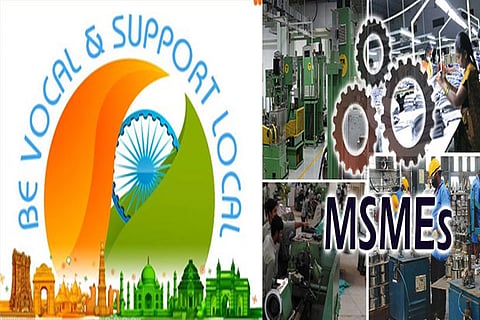

Chennai
Till recently, the impetus was to create a conducive environment for industrial development and to promote advanced practices in manufacturing. And a huge part of this was to be achieved by wooing foreign investments – especially from electronic and automotive giants – and get them to set up their operations in India. The Indian manufacturing space had mastered the ‘assembly line’ style of working, where a significant number of critical components and materials are imported, and assembled effectively in India, thanks to inexpensive labour.
However, manufacturing itself in India has always been on the lower side. In Asian countries such as Thailand, Indonesia, and China, manufacturing has contributed 30-50 per cent to the countries’ GDP. However, the contribution of Indian manufacturing to its GDP has moved from a mere 16% to 18.32% in the last 10 years. The nation’s service sector contributes a higher 54.13% while agriculture is at 14.39%.
Attempting to alleviate the woes of the manufacturing sector, in line with the PM’s vision, the Finance Minister announced a series of relief measures worth Rs 5.94 lakh cr to help MSMEs, power discoms and NBFCs. Easing limits on FDI in defence manufacturing and allowing private sector in commercial coal mining were other reforms.
The timing seems apt as expectations are riding high for India to make the most of the opportunity presented before it during the COVID-19 crisis, and fill the manufacturing void left behind by China, given the trade barriers placed by the US, and more recently Australia. It’s a tall order as China accounted for 28 per cent of the global manufacturing output in 2018. The country controls most of the global supply of rare earth and produces 80% of exports. In fact, last year, the US had asked Australia to safeguard its sources of minerals such as dysprosium and terbium. These minerals are used in products such as cell phones and even in nuclear plants. India, along with the US and Australia is other major sources of such minerals.
It was reported that Apple was considering a proposal to shift as much as 20 pc of its production capacity from China to India. It aimed to beef up its local manufacturing capabilities via contract manufacturers and was eyeing production in the range of $40 bn over five years. Earlier this year in March, the Centre took a call to increase manufacturing in segments such as electronic components, semiconductors, and mobile tech. And it launched three schemes– production-linked incentive scheme (PLI); a scheme for promoting the manufacture of electronic components and semiconductors (SPECS) and Electronics Manufacturing Clusters (EMC) 2.0.
In order to get its foot in the door, India needs to get a few things right. The dip in investment, both from the private and public sector must be addressed by the Centre. But it can do so only if structural reforms encompassing all factors of production – land, labour, capital, entrepreneurship and technology, as emphasised by the PM, are executed on fast track. Providing an enabling infrastructure, a business-friendly policy framework, financial and logistical support, and access to markets need to be done at top speed as China is out to prove it can bounce back without missing a beat. It would be in the best interests of India to revive manufacturing at the earliest and ensure the opportunity doesn’t slip away.
Visit news.dtnext.in to explore our interactive epaper!
Download the DT Next app for more exciting features!
Click here for iOS
Click here for Android